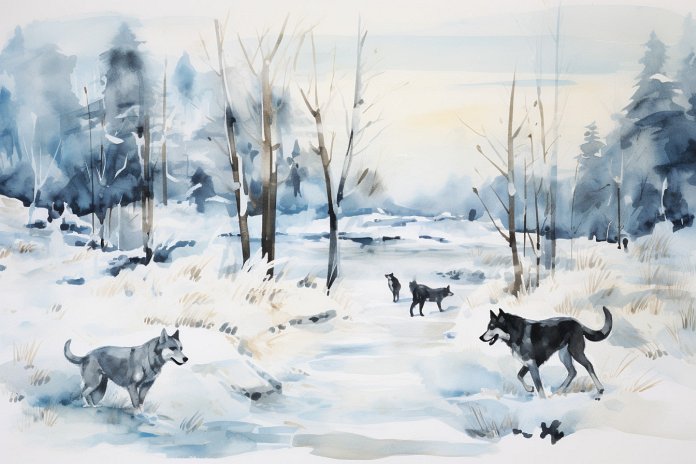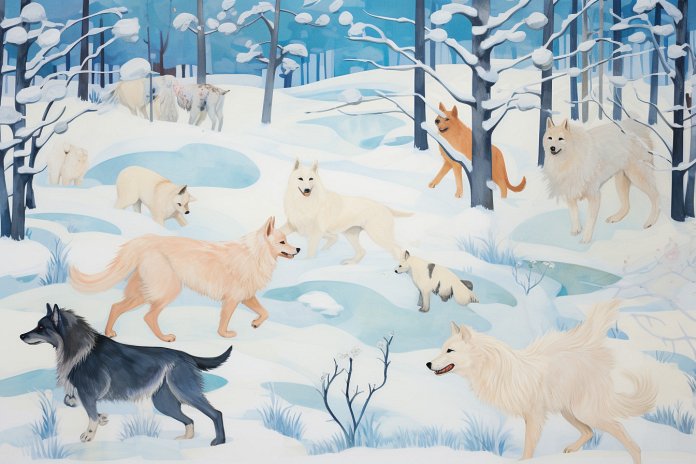
Certain dog breeds, such as Samoyeds, Huskies, and Malamutes, are known for their ability to thrive in cold temperatures and snowy conditions. However, keeping dogs outside in the winter and snow is now less popular as dogs are seen as part of the family. This article explores whether dogs can live outside in the snow and why it is not recommended.
Signs of a Dog Being Too Cold Outside
Even though dogs have fur to keep them warm, they should not live outside in the winter and snow. Dogs can get too cold, and snow can ball up on their feet and cause pain. Signs that a dog is too cold include shivering, tremors, excessive sleeping, lethargy, curling into a ball, seeking shelter, and snow clumping on their fur.
Body Language
Signs of a dog being too cold in the snow include shaking, cowering, weakness, low tail carriage, dropped ears, tail tucking, sleepiness, and other signs such as snow clumping on their fur, cold body, restlessness, signs of frostbite, very dry and itchy skin.
History of Dogs Living Outside in the Snow
Wolves and undomesticated dogs were able to live outside in the snow due to their thick fur coats and tough paw pads. They would also prepare themselves for the cold months by consuming more food and sleeping close to other pack members for warmth. However, most domesticated dogs today have shorter and less dense coats, and they do not have the ability to prepare themselves for the cold like wolves do.
Science Behind Why Dogs Should Not Live Outside in the Snow
Dogs are not meant to live outside in the snow and cold. They are social creatures that need human interaction and attention. Dogs are not immune to the cold, and if it is too cold for humans, it is too cold for dogs. Snow on the ground can cause pain and discomfort for dogs, especially if it balls up on their paw pads.
Keeping Your Dog Safe in the Snow
It is important not to make your dog live in the snow during winter. Dog houses, blankets, and heaters are not sufficient to keep them warm and provide the necessary human interaction. While thick and longhaired dogs may fare better in the cold, they still cannot handle prolonged exposure. When taking your dog for walks in the snow, keep them short and during the warmest part of the day. If the temperature is below 32 degrees, limit walks to 15 minutes. Using puppy jackets, boots, and paw protectors can provide extra warmth, prevent snow clumping, and protect paw pads from cracking.
“Love your dog like family, not like an animal left out in the snow.”

Tips & Things to Know
1️⃣ Dogs should not live outside in the snow: Dogs are not equipped to handle the cold temperatures and snowy conditions for extended periods of time. It is best to keep them indoors during the winter months.
2️⃣ Watch for signs of discomfort: Pay attention to your dog’s body language and behavior when they are outside in the snow. Shivering, lethargy, and seeking shelter are all signs that your dog is too cold and should come inside to warm up.
3️⃣ Take precautions for outdoor activities: If you take your dog on walks in the snow, keep them protected by using doggy jackets and boots. These will help keep them warm and prevent snow from balling up on their fur or cracking their paw pads. Limit the time spent outside in cold temperatures to protect your dog from frostbite.
Frequently Asked Questions, Answered ✅
1. Can dogs live outside in the snow?
No, dogs should not live outside in the snow as they are not equipped to handle the cold temperatures and snow accumulation.
2. What are the signs that a dog is too cold outside in the winter?
Signs include shivering, curling into a ball, lethargy, seeking shelter, and snow balling up on their fur.
3. Why were wolves able to live outside in the snow but not domesticated dogs?
Wolves had thicker fur coats, tough paw pads, and the ability to sleep with a pack for body heat, whereas most domesticated dogs have shorter and less dense coats and lack these adaptations.
4. Why should dogs not live outside in the snow?
Dogs are social creatures that need human interaction and attention. They are not immune to the cold weather and can experience loneliness, discomfort, and even frostbite if left outside in the snow.
5. How can you keep your dog safe in the snow?
Avoid making your dog live outside in the snow, limit outdoor time to short walks and potty trips, provide a warm and comfortable indoor environment, consider using jackets and boots to protect against the cold, and take walks during the warmest part of the day.